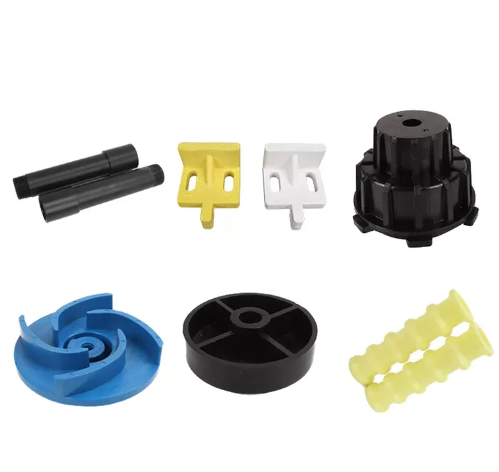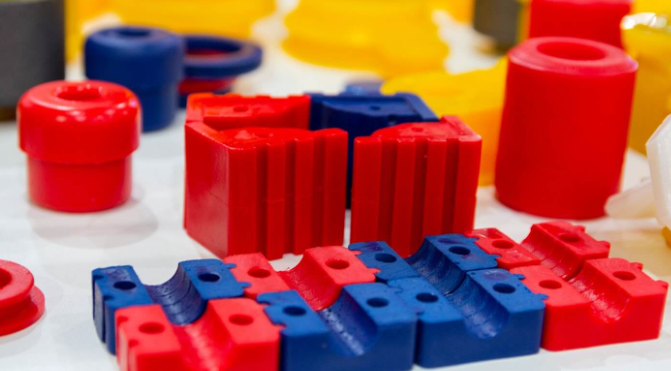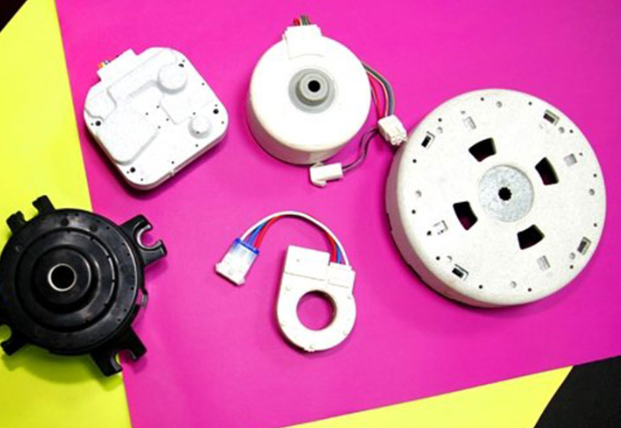Yes, injection molding can be utilized with thermosets for creating durable, heat-resistant components in various industries.

Thermoset Materials
Thermoset materials, known for their durable properties after curing, serve as pivotal components in various high-performance applications due to their inherent thermal stability and structural integrity.
Chemical Composition and Properties of Thermosets
- Chemical Structure: Compose of long-chain polymers that cross-link during curing.
- Heat Resistance: Maintain structural integrity at high temperatures, some up to 350°C.
- Mechanical Properties: Exhibit high tensile strength, often ranging from 25 to 130 MPa.
- Chemical Resistance: Resist corrosion and solvents, making them suitable for harsh environments.
Comparison of Thermosets with Thermoplastics
- Reusability: Thermoplastics can be remelted, unlike thermosets.
- Manufacturing Speed: Thermoplastics often offer faster cycle times; thermosets typically require longer curing times.
- Cost Implications: Thermosets can be more expensive upfront due to their specialized applications but offer cost savings over time due to longevity.
- Recyclability: Thermosets are challenging to recycle, whereas thermoplastics can be recycled multiple times.
Common Applications of Thermoset Materials
- Electronics: Used in circuit boards for insulation properties.
- Automotive: Applied in manufacturing heat-resistant parts such as engine components.
- Aerospace: Integral in composite materials for aircraft due to high strength-to-weight ratios.
- Construction: Employed in adhesives and sealants with a lifespan that often exceeds 20 years.
Injection Molding Process Explained
Injection molding is a manufacturing process for producing parts by injecting molten material into a mold.
The Basic Steps of Injection Molding
- Melting the Material: Typically, thermoplastic pellets are heated to a specific temperature, which can range from 200°C to 300°C, depending on the material, until they reach a molten state.
- Injecting: The molten plastic is then injected into the mold at pressures that can exceed 100 MPa.
- Cooling: Once in the mold, the material begins to cool and solidify, taking the shape of the mold. This stage’s duration is crucial and can affect the quality of the final product.
- Ejecting: After the material has solidified, the part is ejected from the mold. The cycle time from injection to ejection can be as short as 15 seconds for small components with thin walls.
Equipment and Machinery Used in Injection Molding
- Injection Molding Machines: The machines vary in size and are rated based on clamping force, which can range from 5 to 6,000 tons.
- Molds: The molds are made from hardened steel, aluminum, or beryllium-copper alloy and represent a significant portion of the setup cost, often ranging from $1,000 to $80,000 based on complexity.
- Auxiliary Equipment: Items such as material dryers, mixers, and granulators play a role in preparing the raw materials, and their costs can add to the initial investment.
Variables in the Injection Molding Process
- Temperature: Control of the temperature is critical, as it can affect the fluidity of the material and the quality of the finished product.
- Pressure: The injection pressure impacts the filling of the mold cavities and the appearance of the final product.
- Cycle Time: The overall speed of the process is dependent on cycle time, which is influenced by the part size, material, and desired quality. Efficient cycle times can improve production throughput significantly.
- Material: The choice of material affects the properties of the final part, including strength, flexibility, and thermal resistance. It also influences the molding parameters and costs.
The Feasibility of Using Injection Molding with Thermosets
The utilization of injection molding techniques with thermoset materials is a topic of ongoing exploration and innovation. The inherent properties of thermosets provide both opportunities and challenges for manufacturing processes.
Material Behavior of Thermosets During Molding
- Curing Process: Thermosets cure and set during the injection process, with temperatures that can range from 120°C to 180°C, which is lower than many thermoplastics but requires precise control.
- Viscosity: Thermoset viscosity decreases with temperature but requires careful monitoring to ensure complete cavity filling before the material sets.
- Shrinkage: The shrinkage rate for thermosets is considerably less than thermoplastics, typically around 0.2% to 1%, which allows for the creation of parts with high dimensional accuracy.
Challenges Associated with Injection Molding of Thermosets
- Tooling Costs: Molds for thermosets can be costly due to the need for temperature and pressure control, with prices that can exceed $50,000 for complex geometries.
- Cycle Times: The curing time for thermosets can lead to longer cycle times, which may decrease overall production efficiency.
Technological Advances in Thermoset Injection Molding
- Control Systems: Advanced sensors and control systems enable better management of temperature and pressure, improving quality and reducing waste.
- Molding Technologies: New molding techniques, such as Reaction Injection Molding (RIM), have been developed specifically for thermosetting polymers, offering improvements in speed and efficiency.
- Material Innovations: Development of new thermoset materials with faster curing times and enhanced flow characteristics can significantly reduce cycle times, with some materials showing potential to reduce this by up to 20%.

Advantages and Limitations of Injection Molding for Thermosets
Injection molding for thermosets has distinct advantages and limitations that influence its use in manufacturing. These factors play a critical role in deciding whether injection molding is the appropriate process for a particular thermoset application.
Benefits of Using Injection Molding for Thermosets
- Precision and Reproducibility: Injection molding allows for high precision in part dimensions, with tolerances as tight as ±0.005 inches, and the repeatability necessary for large-scale production.
- Complex Part Design: It can produce complex shapes that would be difficult or impossible with other manufacturing processes.
- High Material Utilization: The process often results in minimal material waste, as the exact amount of material needed to fill the mold is injected.
- Enhanced Physical Properties: Thermoset parts benefit from increased thermal stability, electrical insulation, and chemical resistance after molding.
Drawbacks and Constraints
- High Initial Costs: The cost for creating molds is substantial, which may affect the budget of a project, especially for small production runs.
- Limited Material Choice: Not all thermosets are suitable for injection molding; some may not flow or cure appropriately in the mold.
- Post-Curing: Some thermoset materials require a post-curing process, extending the overall manufacturing time and affecting the speed of production.
Economic and Environmental Considerations
- Cost-Efficiency in Volume: While initial setup costs are high, the cost per part can be very low when producing in large volumes, offering economies of scale.
- Energy Consumption: Thermoset injection molding machines are designed for efficiency with average power usage ranging from 15 to 30 kW, but the total energy cost must be factored into the budget.

Case Studies: Injection Molding with Thermosets
Industry Examples of Thermoset Injection Molding
- Aerospace Components: Companies in the aerospace sector often use thermoset injection molding to create parts that can withstand extreme temperatures and pressures, with a focus on high-performance materials like epoxy resins.
- Automotive Electrical Systems: Thermoset plastics are commonly used for electrical components in vehicles due to their excellent insulation properties and durability.
Analysis of Successful Thermoset Molding Projects
- High-Precision Medical Devices: Analysis of medical device manufacturing revealed that thermoset injection molding provided the necessary precision and material properties, with the production of some components boasting tolerances within 0.001 inches.
- Large-Scale Production of Electrical Insulators: A case study in the electrical industry demonstrated successful scaling of production while maintaining strict quality standards, where a single molding project produced over 500,000 parts with minimal defects.
Lessons Learned from Failed Attempts
- Improper Material Selection: Failures often occurred when the thermoset material was not properly chosen for the intended application, resulting in poor performance or processing issues.
- Inadequate Mold Design: Some projects highlighted the importance of precise mold design, as even minor flaws led to significant production problems, causing delays and increased costs.


